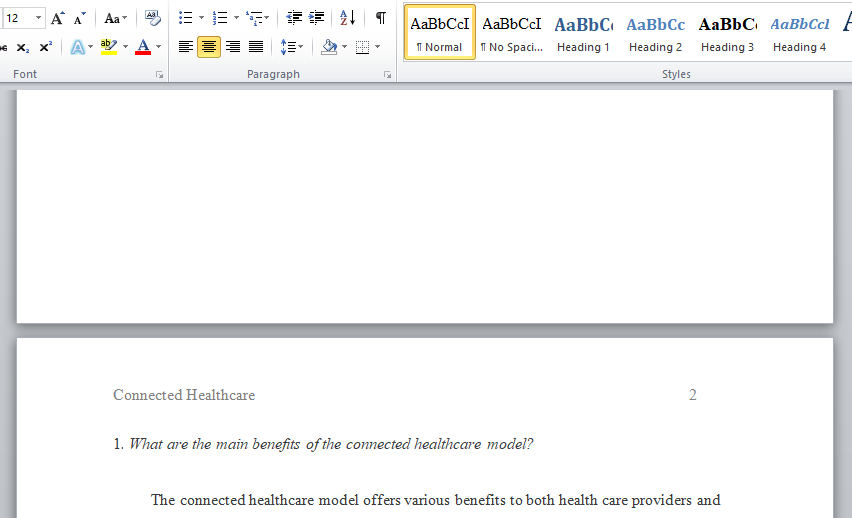What are the main benefits of the connected healthcare model?
Roche: Changing Medical Care with Mobile Technology and Big Data
Imagine a world where instead of calling the doctor for a checkup, routine exam, or mild illness,
the doctor called you instead. Imagine a healthcare system that monitored your body’s vital signs
in real time: heart rate, blood pressure, activity levels, and dietary intake. Imagine receiving notices
on your smartphone with recommendations for changes in diet and exercise or, better yet,
congratulations from your doctor for successfully managing your health!
Welcome to the future world of connected healthcare! This new model of healthcare delivery is
powered by sensors attached to your body, wirelessly connected to your smartphone, which
monitors and displays your health functions and makes personal recommendations. The data in
turn is sent to a health monitoring facility, staffed by nurses and doctors standing by at their own
desktop displays, who in real-time monitor your health using cloud servers, Big Data software
analytics, and smartphone connections to their “patients.”
The connected healthcare model is the future of healthcare in advanced and developing countries
for three powerful reasons. In advanced countries healthcare is typically the largest industry: in the
U.S. healthcare consumes 17 percent of GDP, in Europe around 10 percent, and in the global
economy about 8 percent.
Healthcare is growing globally at twice the rate of inflation and driving budgets increases which
are not sustainable in the long-term. Proponents believe that connected healthcare could reduce
healthcare costs by 40 percent! Populations are aging and requiring more healthcare than in the
past. The technology is available and inexpensive. The Internet of Things (IoT) technologies
(sensors, wireless communication, cloud databases, massive storage facilities, and analytic
software)—honed in manufacturing to monitor everything from planes, trains, and cars, to home
appliances—are inexpensive, increasingly powerful, and have already been extended to the
Internet-of-People (IoP) in the form of activity monitors, driverless cars, and smartphones which
record many user activities.
A good example of the connected healthcare model is the AccuCheck View from Roche Diabetes
Care, Inc. F. Hoffman-LaRoche is a Swiss-based global healthcare company with headquarters in
Basel, Switzerland. There are over 450 million adults in the world with diabetes, four times the
number in 1980. The greatest increase is in Type 2 diabetes, which is related to diet, primarily the
consumption of sugars and simple carbohydrates, leading to overweight and obesity.
Teaming up with the enterprise software company SAP, Roche in 2015 introduced a line of
products that helps diabetic patients monitor their blood glucose levels using a handheld glucose
meter connected wirelessly to a smartphone app developed by SAP. Called AccuCheck View,
Roche’s new package combines a blood glucose monitor, a wearable fitness tracker, a mobile SAP
app, SAP’s HANA cloud platform, and related SAP Big Bata analytics software. The integrated
package can measure a patient’s vital signs and blood sugar level in relation to their physical
activity level and dietary intake in real-time. The data is sent automatically to healthcare providers
who can monitor the patient remotely. The aggregated data is used by SAP analytic software to
identify patterns in large populations for use later in medical decision making and treatment.
The goal is to help diabetes patients make better decisions about their diets and exercise, and to
improve the decision making of healthcare providers using body sensors, real-time monitoring,
and Big Data analytics.
Source: Laudon, K.C. & Laudon, J.P. (2018), Management Information Systems Managing the Digital Firm, p481.
Questions:
1. What are the main benefits of the connected healthcare model?
2. To what extent “AccuCheck View” could be useful to improve the decision making?
3. Search the web for other examples of Big data analytics.
Answer preview :

Word limit : 548
